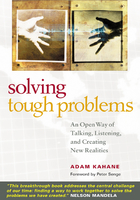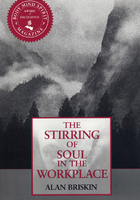4.Small Talk 101
ON STYLE AND SUBSTANCE
Some folks get mightily confused with the style and pacing of small talk. Perhaps some similes or images will suggest the unique characteristics of small talk style in America. (Who knew it was so complicated?)
I have already likened small talk to tofu in its ubiquity and flexibility. The following similes require that you have had some exposure to a freeway on-ramp, jazz music, an automobile, and tennis. I hope that these images lead to a greater appreciation of the style of social conversation.
Small talk is like the on-ramp to the conversation freeway.
When you enter a fast-moving freeway, you do so by means of an on-ramp that allows your car to get up to speed in a protected and safe way as you merge with other cars. You are not expected to be able to negotiate ongoing freeway speeds right from the get-go, nor do we think you should be able to discuss a very deep and interesting topic the minute you begin interacting with a stranger.
By thinking “on-ramp,” you legitimize the open-ended period of introduction—the aimless pleasantries and ritualized exchanges of small talk—as you search for topics that will engage you both. What looks like empty chit-chat is actually subtle social exploration.
Small talk is like jazz, not Beethoven's Fifth Symphony.
During small talk is not the time to plant your feet and hold forth in a prepared manner. You need to be light and agile, ready to respond to any new idea or sidebar that pops up in the course of conversation. You should say nothing that takes more than a minute to say during the introductory period and be willing to let go of your topic to fully commit to whatever the other person is saying. Listen for both content and emotion. Be present to the shifts and ebbing of the other person's contributions—this is how you discover what you have in common.
Notice the jazzy fluidity of Sarah, Erin, and Jacob's conversation:
SARAH: We just came from the Hall of Flowers out in the park. What gorgeous orchids they had. Have you ever been out there?
ERIN: I'm not sure. Hon, is that the one beside the Arboretum?
JACOB: No, I think she means the one in the big glass building.
ESTHER: Oh, that's the one that is like the one we saw in England, right?
SARAH: Oh, when were you in England? We're going next week. Then we're driving up to the Edinburgh Festival.
JACOB: We were just talking about that! We've been wanting to go for a long time. How much time are you allowing for the drive?
See how they ended up someplace they didn't anticipate? They started chatting about the local Hall of Flowers and ended up at the Edinburgh Festival in Scotland. That's the fun of small talk.
Small talk is like the ignition in a car.
You love the thrill of travel. Maybe a leisurely Sunday drive is your happy place, or maybe you're the high-speed thrill-a-minute type. Either way, you are not going anywhere until you actually start your cold car and get it out of the garage. The same goes for good conversation. Someone has to get the motor going before you can go anywhere at any pace.
You need to invest energy, goodwill, and something to share with others in a conversation to get it moving. This is the work of small-talk rituals. Then you must give it some gas—by offering benign conversational topics—to get it rolling.
This offering of conversational topics is:
? The most important conversation building element
? The biggest failing of would-be small talkers
Keep that in mind as you walk through this chapter.
Small talk is the volleying that precedes a tennis game.
In tennis, volleying is ritualistic and cooperative; you must return the ball in such a way that the other person has a reasonable chance of hitting it back. There is no keeping score, but it gives you the opportunity to notice the style and skill of your opponent. (We can say it is aimless, but it is not without purpose.) Likewise, in small talk you have to make comments that your partner has a reasonable chance of being able to respond to. Small talk, like volleying, is designed for feeling out your partner in a safe and formal way, giving you both a chance to warm up. This is my favorite analogy so I'll be using it throughout the rest of this chapter.
DON'T BE A BORE
Being a bore happens when instead of volleying, you hog the ball (i.e., the conversation) while failing to notice the fidgeting and slack expressions of the other person. (I once had a friend who routinely talked waaay too much. I would cue him by pointedly saying, “MEGO,” which stood for My Eyes Glaze Over.)
The first deadly form of being a bore is the on-boarding lecture. You are asked an innocent encouraging question about your work or hobby, and you respond with a thorough explanation of the issue as if you have only this one shot to explain everything you know about it. You rob your talking partner of twelve minutes of their life when they probably were ready to give you forty-five seconds. They will never forget you, and for the wrong reason.
The second deadly form is the personal narrative. You feel compelled to start at the beginning of a narrative with your personal experience of exactly when and how the story unfolded to you:
I was talking with Jesse, you know the guy who handles the loading dock? And he was saying that the driver of the truck that brings the first delivery actually knows the schedule for the rest of the week, so I'm all, “Can he tell us when we're likely to get the printer delivered?” and he's all, “Don't you know that was cancelled?” so that's how I learned that the new manager has cancelled the equipment upgrade, which means they're probably going to close down this branch.
In this case, a summary statement—or even just the last sentence of your long-winded explanation—would have done just fine:
Apparently, the new manager cancelled the equipment upgrade, which means they're probably going to close down this branch.
No one wants to be a bore. So why does it happen? The tremendous sense of urgency to tell your story can make it easy to forget the norms of your social surroundings. In responding to your own inner need for communication completion, you become inattentive to the probable needs and attention span of your conversational partner. You may forget that small talk is in the realm of interruptions and distractions, not of sustained immersion and concentration.
With Bore #1, the lecturer, it is likely that he actually averted his eyes from his speaking partner and did not get the signals of “I've had enough,” typically eye darts of impatience. Bore #2, the dramatic storyteller, is feasting on the attention of what she perceives to be a fascinated audience. Instead of talking about an event, she is talking about herself. Way beyond the point of interest. In both cases, the constraints of the social situation have been disregarded. The talkers are meeting internal needs, not the needs and interests of the listener. I think we all have to make this mistake once (maybe twice) before we learn the lesson to carefully scan our stories for length.
Of course, there are exceptions—people who can tell long-winded narratives while keeping their talking partners engaged. But does that description ring true to who you are? Sure, there are spellbinding raconteurs with devoted listening audiences. Here are five tips for keeping your own audiences (devoted or not) engaged and entertained.
? Know that people do NOT want long narratives. Remind yourself of this Great Truth before you open your mouth. Study how other people handle the time issue. Make the phrase “long story short” your friend.
? Visualize the tennis volley. Are you back-and-forthing or just forthing?
? Get to the point early. Make it before someone feels the need to interrupt you.
? Put the ball in their court. If you really want to share your wonderful/awful adventure in its totality, suggest that you get together for coffee later. Put the ball in their court whether they want to accept that invitation.
? Scan their faces for interest. If your eyes are engaged with theirs, you'll probably deliver a sentence. If they are averted, you might end up donating a paragraph. You must determine if they are really listening or just waiting for you to shut up.
HANDLING BORES
The kindly gentleman leans back as he begins his next paragraph on the history of his automotive parts business. He looks off into a corner of the ceiling as he fills in the details of the modification of his physical plant to accommodate the computerization of vehicles, missing the slack expression on the face of his victim—er, listener—whose eyes are glazing over. He is giving a speech, as opposed to having a conversation.
Lecturers abound because telling people something you know is ever-so-much more comfortable than the ambiguity and awkwardness of early small-talk exchanges. Of course, it is! Your train leaves the station and you chug along without any passengers.
“Wait! Wait!” you say. “This happens to me all the time! How do I handle this situation?” To which I will reply with the frustrating response, “It depends.” Social situations are notoriously complex. Unless it's your boss we're speaking about. There's an easy answer for that one. You settle back to enjoy the narrative and, if you're smart, take mental notes for a later conversation in which you can demonstrate your retention of his fascinating history. I'm dead serious here. When you bring up some item from a previous conversation, it is tremendously gratifying to the other as evidence of your respect and attention. Don't you think that would be useful in career building?
(For tips on exiting conversations in different social contexts, take a look at Chapter 17, “How Do I Get Out of This?”)
MORE SMALL TALK DOS AND DON'TS
There are certain stylistic features of small talk that bear some discussion to help you get the hang of them. I will introduce them here, and you will see them reappear in various later chapters. In my experience, you need to hear something new more than once (or seven times) for it to sink in.
The Orphan: A Don't
Some people appear to believe that they should say as little as possible.
HER: Do you come here often?
HIM: No.
This is like hitting the ball out of the court. Now you or your speaking partner has to serve up another opener, and on and on, according to your patience. These strong, silent types will have an unhappy time at the wiener roast.
Be aware of how often you answer an opening question with a simple, one-syllable response (i.e., an orphan). These monosyllabic statements (yes, no, yeah, etc.) have an ungracious feel to them. They put a stop to the volley that characterizes successful small talk. If you usually respond with orphans, you are a conversation killer.
Even if yes or no is an appropriate answer, don't let it stand there all by itself. Appending a simple phrase gives your speaking partner something to work with (or at least a little encouragement and motivation) to further the conversation:
No. I don't think so.
Yes, I believe I saw him
Yes, thank you.
No, I didn't park there.
Free Information: A Do
Free information gives the other person a potential topic to latch on to and develop the conversation. If you can keep adding more free information as you chat back and forth, eventually a topic will emerge that genuinely engages you both.
BRIAN: It's a beautiful day, isn't it?
YOU: Yes, it is. I noticed an open-air art show on the next block. Is this for local artists only, do you know?
BRIAN: I'm not really sure about that. I just moved here from New York about three months ago. But I do know one of the artists there and apparently he flies in every year from Colorado to participate. I would guess that means he's successful in selling his work.
Now you and Brian have a bit more information to work with. You can take whatever tidbit he provided (and he provided several) that seems like something you can actually respond to.
YOU: I'm surprised by the number of people moving to Colorado; it seems to have become popular! I have no idea why, do you?
When in doubt about where the conversation is going, add a comment that has the possibility of taking you down another conversational avenue. You have no idea what small factoid will turn into a major bonding topic. Here's my favorite example:
I went into Macy's department store to buy a lipstick to match the color of a new red dress. I walked over to the nearest counter, which just happened to sell Clinique. The woman at the counter showed me that they indeed had the perfect color on a sample lipstick and opened a drawer to fish out a new one for me.
“Oh, no!” she said, “We don't have any of those left! How do you like that! They probably have 10 dozen up in Yakima, Washington, and we don't have a single one. Sorry!”
I thanked her and walked away, going about six paces before spinning around and returning to her.
ME: Why did you say “Yakima”?
SALESWOMAN: I just meant any little podunk of a town, that's all.
ME: Yeah, but you said, “Yakima.” How come?
SALESWOMAN: Well, I have an aunt who lives there.
ME: And I have my Aunt Fritzi who lives there!
SALESWOMAN: My aunt's bridge partner's name is Fritzi!
And there you have it. Much was made of this conversation—here and in Yakima.
I don't suppose that finding that our Yakima aunts were bridge partners sounds like a big deal, but it was for us and made the exchange that much more pleasant and memorable.
Free information works best when it is specific.
Do use proper and specific nouns rather than generalities. Generalities are vague placeholders, while specifics and proper nouns are lively communicators. Some people are more comfortable holding back specifics, believing perhaps that it is too personal or may be more than the listener cares to know. They tell me that they assume the listener would not be interested in such details, so they keep it nondescript.
Guess where a nondescript conversation goes? Nowhere!
Here's another example of what can come out of the exchange of specific free information:
I casually asked my neighbor how his Christmas had gone and he replied that it went okay, but his nine-year-old son was disappointed in his Christmas gift and he really felt bad about it. I raised my eyebrows as he went on. The son had asked for a specific Boba Fett Slave 1 ship Lego set. The dad had looked and looked and couldn't find it anywhere. So they gave him two other sets that were pretty neat, but the boy was clearly lukewarm when he unwrapped the gifts Christmas morning. It was the next day, and he still hadn't even bothered to open the boxes.
As it happened, I passed the Lego store that very afternoon and managed to find the Boba Fett Lego set the boy had asked for, and I let the father know where to find it. Win-win-win: The boy is thrilled, the father is a hero, and I don't look so bad myself.
Anchors: A Do
Have you met the person who immediately discusses the null hypothesis of their PhD dissertation? Gosh, I hope not, but if like that guy you start with a topic that is not generally available to most people, you are putting yourself at a disadvantage to having a successful chat. Guaranteed, they will not find your obscure knowledge charming. This is what I call lobbing the tennis ball over their heads.
Instead, look for elements in the immediate area to act as an anchor. Any comment pertinent to the reality you're both sharing at the moment of your encounter is a good bet for an easy and appropriate beginning. You can start with a simple observation:
This looks like a brand new carpet!
That's the new PTA president, isn't it?
That was the best speech I've ever listened to.
I nominate this elevator as the world's slowest.
The meringue on that pie must be three inches tall.
Looks like rain again. Guess who didn't bring their umbrella.
That portrait is probably one of the founding fathers of the agency, huh?
Notice how impersonal these statements are? That's the point—they are safe topics that you can count on to anchor your conversation. You are not being presumptuous or invasive with personal inquiries. You are triangulating—the “you” and the “me” are talking about an “it,” a third thing that gives you the opportunity for the exchange of pleasant commentary. At the same time, these neutral topics are easy for you and the other person to get out of if you want to. They are certainly the topics of choice if you need to chat while you wait for the elevator or taxi or in a situation where you know very well you're not going to be able to develop anything of substance. And that's all right, because the friendly sounds you're making to each other are the construction sounds of a conversational on-ramp.
(I'll go deeper into anchoring topics and where to go from there in the next chapter.)
IT DEPENDS
Right here I'd like to address one of the most common anguished cries for help I receive: “Dr. Fleming, how do you handle the situation when somebody just walks up and interrupts you in the middle of the sentence?” Whatever the ending to that question may be, there are two answers: It depends and It's complicated. It also depends upon which set of complications are in play. You've got to weigh the options, the personalities, the locale, the audience, the hour, the history, your interest and patience, and what you want from the relationship.
The asker of such a question has a particular situation in mind, and while it may be as clear as crystal to them, it is as opaque as a rock to me. Just because you can ask such a question doesn't mean it can be answered in the same (or any!) amount of time.
As I said, it depends . . .
Images
Here are the important concepts we've just looked at (and that you will see again and again throughout the rest of the book). Please review these ideas in your imagination. Perhaps you can conjure up a scenario, starring you, where you see yourself putting these ideas into practice.
? Small talk is best back and forth.
? Orphans are conversation killers.
? Free information helps to take you down different conversational avenues.
? Free information works best when it is specific.
? Pull from your shared reality to find an anchoring topic.
? Triangulate: Talk about neutral third things until you find one that gives you the opportunity for a pleasant exchange.
? It (always) depends . . .















